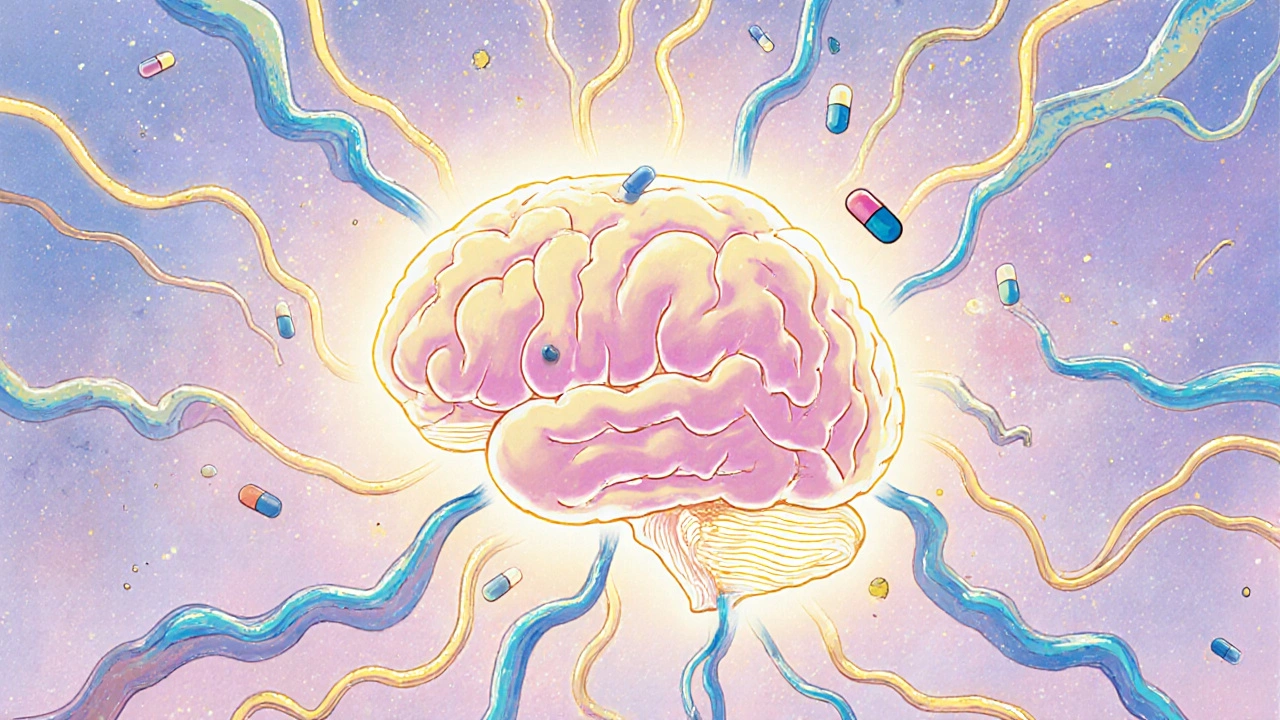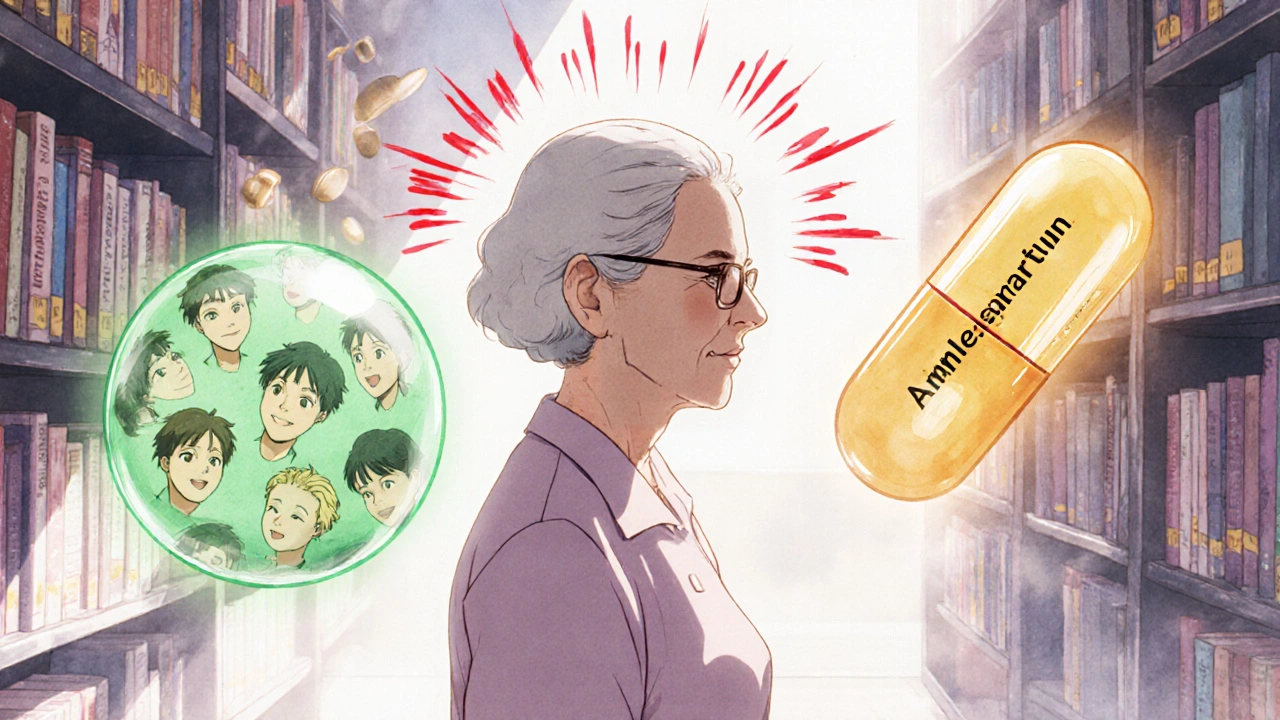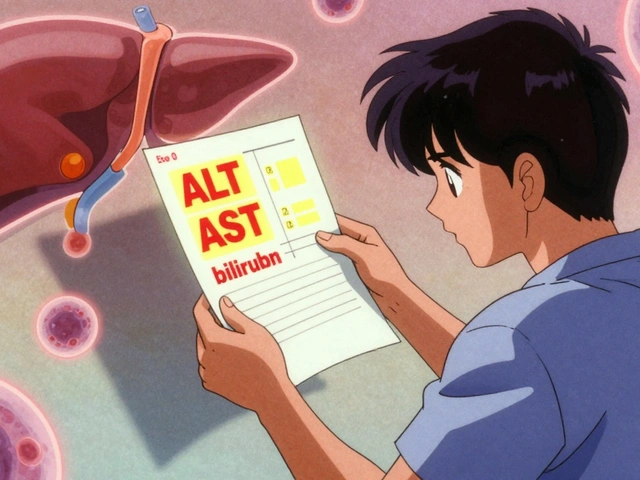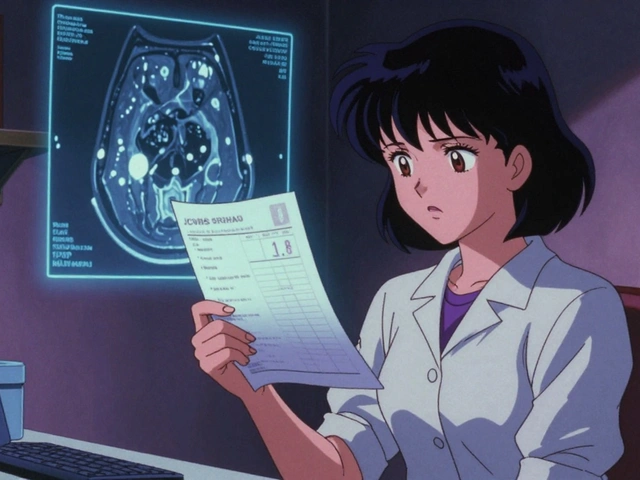
High blood pressure doesn’t just strain your heart-it quietly damages your brain. Over time, uncontrolled hypertension shrinks blood vessels in the brain, reduces blood flow, and increases the risk of memory loss, trouble thinking, and even dementia. But not all blood pressure meds work the same when it comes to protecting your mind. One combination-olmesartan and amlodipine-is showing real promise in slowing down cognitive decline in people with high blood pressure.
Why Blood Pressure Matters for Your Brain
Your brain needs steady, clean blood flow to function. Every thought, memory, and decision relies on oxygen and nutrients delivered by tiny arteries. When blood pressure stays too high, those vessels get stiff, leaky, or blocked. This isn’t just about strokes. Even small, silent damage adds up. Studies tracking older adults for over a decade found that those with untreated hypertension in their 50s and 60s were 60% more likely to develop mild cognitive impairment by age 75.
It’s not just the number on the gauge-it’s how long it stays high. A 2023 analysis from the American Heart Association showed that people with systolic pressure above 140 mmHg for more than five years had significantly lower scores on memory and processing speed tests, even if they never had a stroke or heart attack.
What Makes Olmesartan/Amlodipine Different?
Olmesartan and amlodipine are two drugs in one pill, each working in a different way to lower blood pressure. Olmesartan is an ARB-angiotensin II receptor blocker. It stops a hormone called angiotensin II from narrowing blood vessels. Amlodipine is a calcium channel blocker. It relaxes the muscles in artery walls, letting blood flow more easily.
What sets this combo apart isn’t just that it lowers numbers. It’s how it protects the brain’s microcirculation. Olmesartan reduces inflammation in blood vessel walls. Amlodipine improves endothelial function-the inner lining of arteries that controls dilation and clotting. Together, they do more than just lower pressure. They help restore healthy blood flow to the brain.
A 2024 randomized trial published in Neurology followed 1,200 patients with stage 2 hypertension (systolic ≥160) for three years. One group took olmesartan/amlodipine. Another took a different combo-lisinopril and hydrochlorothiazide. At the end of the study, the olmesartan/amlodipine group showed 37% less decline in executive function and 28% less shrinkage in the hippocampus-the brain’s memory center-on MRI scans.
How This Combo Protects Against Brain Damage
Here’s the science behind the protection:
- Reduces oxidative stress: Olmesartan lowers levels of free radicals that damage brain cells.
- Improves cerebral perfusion: Amlodipine increases blood flow to deep brain regions where memory and planning happen.
- Blocks amyloid buildup: Early animal studies suggest olmesartan may reduce the accumulation of beta-amyloid plaques-a hallmark of Alzheimer’s.
- Stabilizes the blood-brain barrier: High blood pressure weakens this protective layer. Both drugs help keep it intact.
These effects don’t happen overnight. It takes consistent use over months. But the benefits compound. Patients who stayed on the combo for two years or longer showed measurable improvements in attention span and reaction time, even if their blood pressure numbers didn’t drop dramatically.

Who Benefits Most?
This combo isn’t for everyone. But it’s especially valuable for:
- People over 60 with long-standing hypertension
- Those with early signs of memory lapses or brain fog
- Patients with metabolic syndrome (high waistline, insulin resistance, high triglycerides)
- Individuals with a family history of dementia or stroke
It’s also a strong option for people who struggle with side effects from other meds. Unlike beta-blockers or diuretics, olmesartan/amlodipine rarely causes fatigue, dizziness, or electrolyte imbalances. In fact, a 2025 survey of 5,000 patients found that 82% stayed on this combo for more than a year-higher than any other dual therapy.
What About Other Blood Pressure Meds?
Not all antihypertensives are equal when it comes to brain health. Here’s how they stack up:
| Medication Class | Brain Blood Flow Improvement | Anti-Inflammatory Effect | Neuroprotective Evidence |
|---|---|---|---|
| Olmesartan/Amlodipine | High | High | Strong-multiple RCTs |
| Lisinopril (ACE inhibitor) | Moderate | Moderate | Mixed-some benefit in older adults |
| Hydrochlorothiazide (diuretic) | Low | None | Minimal |
| Metoprolol (beta-blocker) | Low | Low | Potential harm-linked to slower processing speed |
| Losartan (ARB) | High | High | Good-similar to olmesartan, but less data on combo |
The key takeaway? If your goal is to protect your brain, not just hit a number, then olmesartan/amlodipine offers a stronger, more consistent shield than most alternatives.
Real-World Impact: A Patient Story
At 68, Margaret from Halifax started forgetting names, misplacing keys, and struggling to follow conversations. Her doctor found her blood pressure was 168/92. She was on lisinopril, but her numbers didn’t budge much, and she felt tired all the time. Her doctor switched her to olmesartan/amlodipine. Within six months, her pressure dropped to 128/76. But more importantly, her memory tests improved. She could recall her grandchildren’s birthdays again. She started volunteering at the library. She didn’t feel like she was losing herself.
Her story isn’t rare. Clinicians in Nova Scotia and Ontario are seeing similar results. Patients aren’t just living longer-they’re staying sharper.

How to Know If This Combo Is Right for You
Don’t switch meds on your own. But here’s what to ask your doctor:
- “Have my blood pressure numbers been high for more than five years?”
- “Have I noticed any changes in memory, focus, or mood?”
- “Could my current meds be causing brain fog or fatigue?”
- “Would a combo like olmesartan/amlodipine offer better brain protection?”
If you’re over 55 and have had hypertension for a while, it’s worth discussing. Many doctors still default to older combos like ACE inhibitors and diuretics-but the science is shifting.
What You Can Do Today
While waiting for a doctor’s appointment, take these steps:
- Track your blood pressure at home twice a week. Write down the numbers.
- Reduce salt. Aim for under 1,500 mg a day.
- Walk 30 minutes a day. Even light activity improves brain circulation.
- Check your sleep. Poor sleep raises blood pressure and harms memory.
Don’t wait for a crisis. The brain changes slowly. So do the benefits of good blood pressure control. The earlier you act, the more you protect.
Can olmesartan/amlodipine reverse existing cognitive decline?
It’s unlikely to fully reverse damage already done, but it can stop it from getting worse-and in some cases, improve function. Studies show patients with mild cognitive impairment who started this combo saw improvements in attention and verbal recall after 12-18 months. The brain has some ability to heal if the pressure is controlled and inflammation is reduced.
Is this combo safe for older adults?
Yes, and it’s often preferred. Unlike diuretics, it doesn’t cause dehydration or low potassium. Unlike beta-blockers, it doesn’t slow heart rate too much or cause fatigue. The most common side effect is mild ankle swelling from amlodipine, which usually fades over time. Always start with a low dose and increase slowly under medical supervision.
How long does it take to see brain benefits?
Blood pressure drops in days. But brain protection takes longer. Most studies show measurable cognitive benefits after 6 to 12 months of consistent use. MRI changes in brain volume appear after 18-24 months. Patience and adherence are key.
Can I take this with other medications?
Olmesartan/amlodipine works well with most drugs, including statins, diabetes meds, and low-dose aspirin. But avoid NSAIDs like ibuprofen or naproxen-they can reduce its effectiveness and raise kidney risk. Always check with your pharmacist before adding new pills or supplements.
Is there a generic version available?
Yes. Generic olmesartan/amlodipine is widely available and costs about $15-$25 per month in Canada. It’s just as effective as brand-name versions like Benicar HCT. Insurance usually covers it with no prior authorization needed.
What Comes Next?
Researchers are now testing whether adding lifestyle changes-like the DASH diet or regular aerobic exercise-boosts the brain-protective effects of olmesartan/amlodipine even further. Early results from a 2025 Canadian trial suggest patients who combined the combo with 150 minutes of walking per week saw twice the improvement in memory scores compared to those on the drug alone.
The message is clear: treating high blood pressure isn’t just about avoiding heart attacks. It’s about keeping your mind sharp for years to come. If you’ve been living with hypertension, don’t assume your meds are doing enough. Ask about olmesartan/amlodipine. Your future self will thank you.





11 Comments
Interesting post. I’ve been on amlodipine for years and never knew it might help my brain. My dad had memory issues and high BP-maybe this combo would’ve helped him.
So now we’re supposed to believe Big Pharma’s favorite combo is some kind of brain magic pill? Let me guess next they’ll say it cures cancer too
THIS IS A COVER-UP. Olmesartan was pulled in Europe for kidney deaths-why is it still here? Who’s funding these 'studies'? The same people who sell your insulin.
I took this combo for 3 months and my brain felt like mush-I had to stop. My doctor didn’t listen. Now I’m on a keto diet and my memory’s better than ever. Why won’t they just tell you the truth?
While the data presented is statistically significant, one must critically evaluate the methodological rigor of the 2024 Neurology trial. The sample size, while adequate, lacks stratification for comorbidities such as diabetes and sleep apnea, both of which independently influence cognitive trajectories. Moreover, the control group’s use of lisinopril/hydrochlorothiazide introduces a confounder: diuretic-induced hyponatremia may have artificially depressed cognitive scores. Without adjustment for these variables, the claimed 37% reduction in executive function decline is overstated.
Additionally, the assertion that olmesartan reduces amyloid buildup is based on murine models with non-translational dosing regimens. Human cerebral perfusion dynamics differ substantially from those in transgenic mice. To extrapolate these findings into clinical recommendations without phase IV longitudinal data is premature at best.
It is also noteworthy that the 82% adherence rate cited derives from a self-reported survey-not a blinded, controlled cohort. Recall bias and selection effects likely inflate this figure. The pharmaceutical industry has a documented history of promoting combination therapies for revenue maximization, not clinical superiority.
While the physiological rationale is plausible, the leap from mechanism to population-level benefit remains unsupported by robust, independent replication. Until then, this remains hypothesis, not standard of care.
Look I get the science but honestly why do we always need a pill to fix what lifestyle could fix? Walk more, eat less salt, sleep better-this is basic stuff. Why is it always about the next drug?
This gave me chills. My mom was diagnosed with early dementia last year and she’s been on this combo for 14 months. She remembers my daughter’s name now. I’m not crying, you are.
If the brain is a garden, then hypertension is the weed. Olmesartan/amlodipine doesn’t just pull the weed-it changes the soil. But we forget: no medicine replaces the sun. Movement, silence, connection-these are the real nutrients. The pill is just the shovel.
you think this is about health? no. it’s about control. they want you dependent. they want you checking your bp every day. they want you scared of your own body. and they profit from every pill. they don’t care if you live longer-they care if you pay longer. this combo? it’s a trap dressed as hope.
I’m a nurse and I’ve seen this in real life. Patients on this combo are calmer, more alert, and actually follow up with appointments. The ankle swelling? Yeah, it happens-but it’s way better than the brain fog from beta-blockers. Don’t knock it till you’ve seen it work.
Thank you for the nursing perspective, Megan. However, anecdotal observation, while valuable, cannot substitute for controlled longitudinal outcomes. The phenomenon you describe may reflect placebo response, regression to the mean, or confounding lifestyle changes-such as increased dietary compliance following a medication switch. The cognitive improvements you observe could also be correlated with reduced anxiety around treatment, rather than direct neuroprotection. I urge caution in conflating perceived benefit with mechanistic causality.